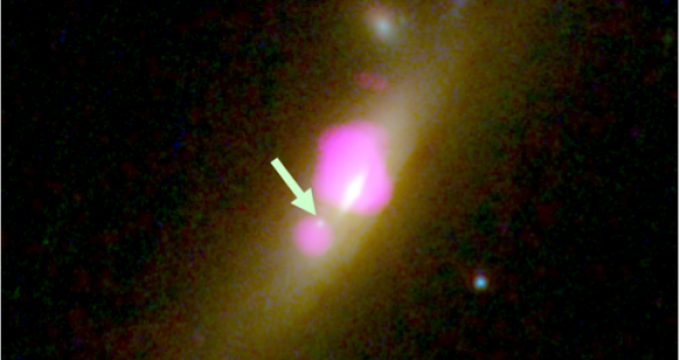In A Rare Galaxy With Two Black Holes, Neither Can Live While The Other Survives

Astronomers looking at a galaxy far, far away have spotted a rare creature — a galaxy with two black holes. And, in a finding that’s even rarer than a double black hole-toting galaxy, one of the black holes is significantly smaller than the other and apparently “naked,” or starved of stars.
“One black hole is starved of stars, and has 500 times fewer stars associated with it than the other black hole,” Julie Comerford, an assistant professor at the University of Colorado Boulder and the lead investigator of the new research, said in a statement released Tuesday. “The question is why there’s such a discrepancy.”
Supermassive black holes can have masses ranging from anywhere between a few million and a few billion solar masses, and are present at the center of all galaxies. Observations suggest that these black holes are formed either due to the merger of smaller “seeds,” or a supermassive black hole seed from a giant star — about 100 times the sun’s mass — that ultimately forms into a black hole after it runs out of fuel and collapses.
Most galaxies have only one supermassive black hole in their heart, and until now, only a handful of galaxies harboring two black holes have been observed.
This particular galaxy, which goes by the name of SDSS J1126+2944, is believed to be the product of a merger of two smaller galaxies, which brought together a pair of supermassive black holes.
Researchers speculate that the starved black hole either lost its mass when the two galaxies collided and will eventually disappear, or, more tantalizingly, is an example of an intermediate-sized black hole that will morph over time into a supermassive one.
If the galaxy does contain an intermediate black hole, it would provide researchers an opportunity to test the theory that supermassive black holes evolve from these lower-mass seeds.
“Theory predicts that intermediate black holes should exist, but they are difficult to pinpoint because we don’t know exactly where to look,” co-author Scott Barrows, a postdoctoral researcher at the university, said in the statement. “This unusual galaxy may provide a rare glimpse of one of these intermediate mass black holes.”
© Copyright IBTimes 2024. All rights reserved.






















